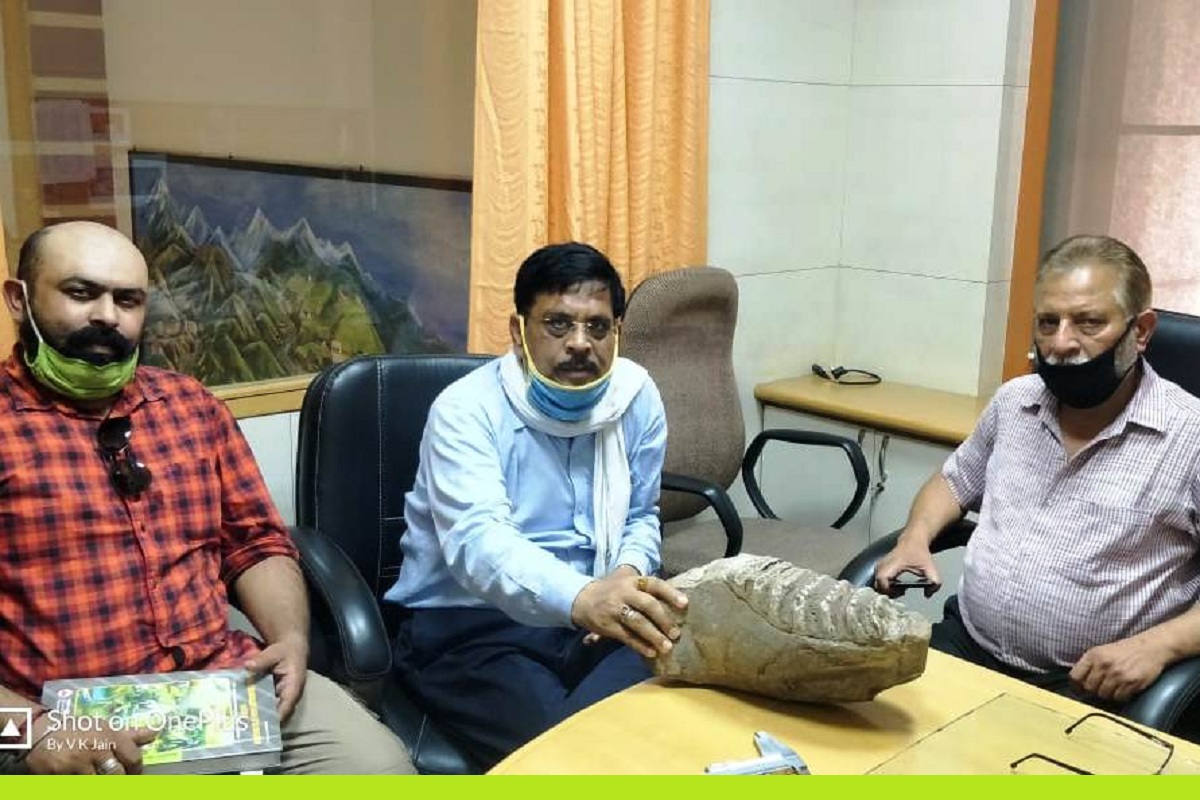A 5 to 8 million years old fossil of a Stegodon Elephant has been discovered by forest officials and wildlife experts from Badshahi Bagh area of Shivalik Range in District Saharanpur.
This discovery has enthused the wildlife experts and lovers and is deemed to be important for the further study of fossils in the country, particularly in the Shivalik region as it is the oldest fossil recovered from here, said Sanjay Kumar, Divisional Commissioner of Saharanpur.
Advertisement
The fossil was found by a team of forest officials and wildlife experts near Badshahi Bagh area of Shivalik Range when they were doing a trap camera survey for counting of wildlife in the region.
The team was led by Chief Conservator of Saharanpur Division VK Jain and included landscape coordinator of World Wide Fund for Nature (WWF) India Dr IP Bopanna, senior programme officer Devvrat Panwar and other forest staff.
According to the Chief Conservator, since the past few months, the population census of the wildlife in Shivalik was carried out using trap camera technique. During this exercise when the team was crossing through Badshahi Bagh area they came across a strange object that was collected and taken to the forest office.
Realising that it was a fossil, the specimen was shown to Dr RK Sehgal, a scientist at Wadia Institute of Himalayan Geology Institute, Dehradun and retired scientist Dr AC Nanda, also from the same institute, said Jain adding that after closely examining the specimen the scientists concluded that it could be 5 to 8 million years old.
Both the scientists have recognition for their work on fossils of elephants from the Shivalik Group. The scientists also compared this fossil specimen with the fossil specimens of Stegodon displayed in the Museum of the Institute and hence it was concluded to be the one of Stegodon Elephant.
Jain informed that the discovered fossil is a moderately preserved third lower molar with nine well-developed ridges on its surface. The length of the molar is nearly 24 cm and enamel of the molar is very thick. The sandstone embedded on the fossil is medium grained, salt and pepper in nature. This type of lithology is characteristic for the Middle Shivalik.
Fossils of Stegodon had also been discovered from other locations of Shivalik groups like Kala Amb; Saketi (HP); Jammu foothills and in the vicinity of Chandigarh. Besides, they also have reported to have an existence in the foothills of Nepal and Pakistan.
Stegodon is a genus of the extinct subfamily Stegodontinae of the order Proboscidea (history of the elephant family is scientifically called Probosidean). It is believed that they existed from 11 million years in the past to as recent as 6000 years in Asia, Africa and North America. There are unconfirmed records that they survived until 4,100 years ago.
Elephants have managed to live successfully on most continents from Southeast Asia to South America and have adapted to different climates and habitats. At present two species, mainly the Asiatic and the African elephants, have successfully survived.
It is said that the direct ancestors of Stegodon lived even before Asian, African elephants and mammoths. However, they had a remarkable feature that their tusk could grow as long as 10 feet and has a great resemblance with the elephants of today.
The presence of the Stegodon shows the existence of dense forests and lots of river channels in the area at that time. Presently also, Shivalik Range is known for the movement of elephants as it is close to the Rajaji National Park which is known for Asiatic elephants.
















